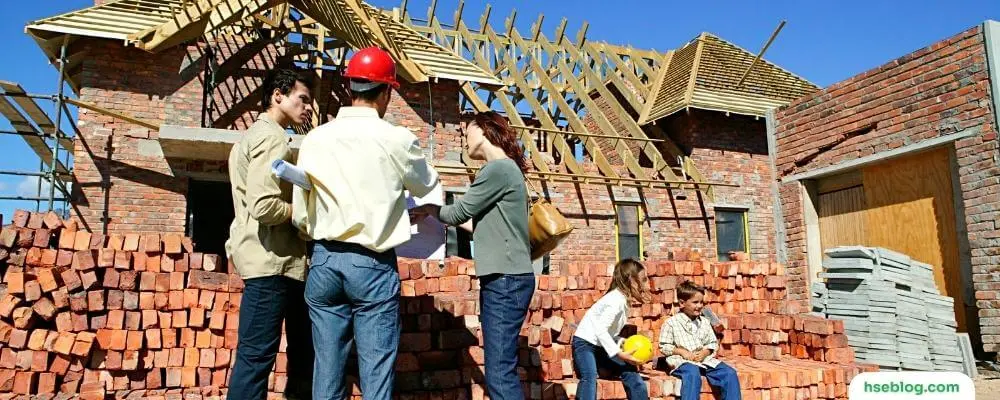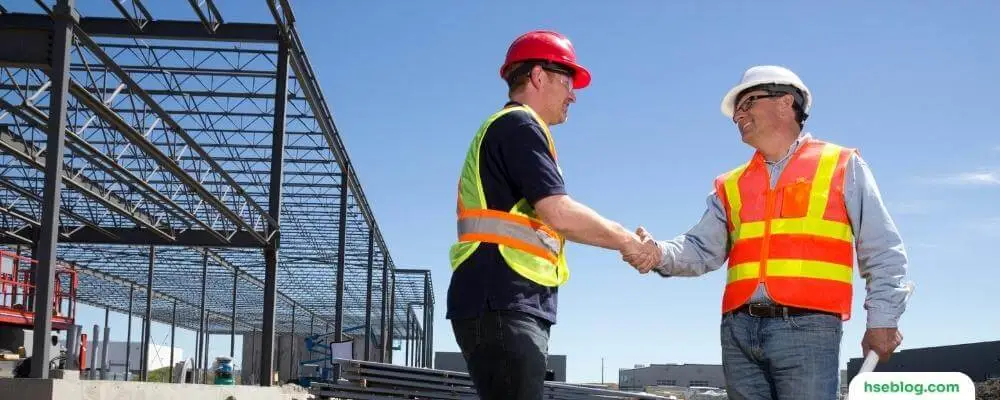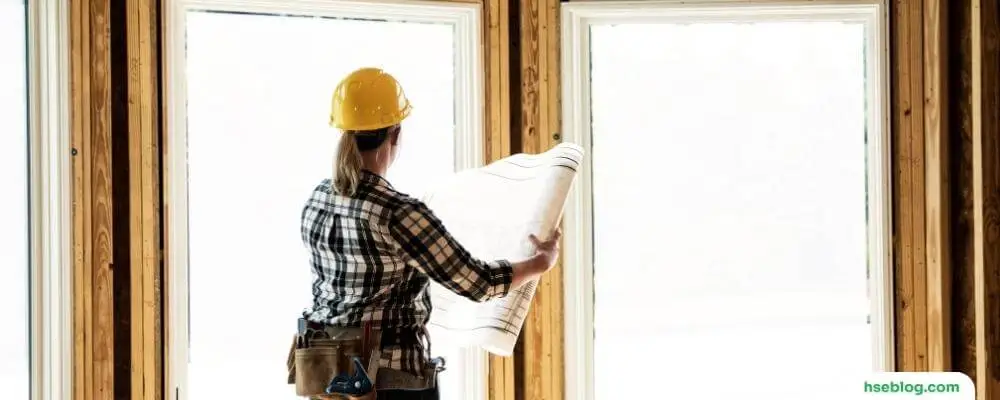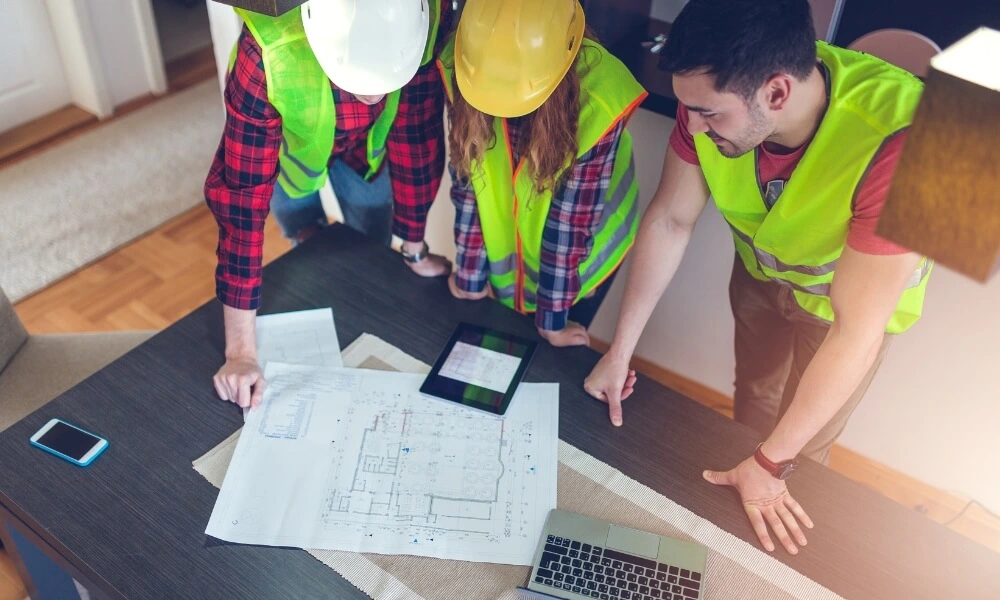Contractors work in various industries, from construction to manufacturing, and their job duties vary widely. However, one thing that remains constant across all industries is the need for safety on the job site. To minimize the risk of accidents and injuries, contractors must follow strict safety guidelines and procedures.
This blog will discuss the top 10 safety rules that every contractor should follow. From wearing personal protective equipment to following proper lifting techniques, these rules are designed to keep contractors safe and healthy while on the job. By following these guidelines, contractors can ensure that they work in a safe environment and perform their job duties effectively and efficiently.
Safety Rules Every Contractor Should Follow
As a contractor, you are responsible for ensuring the safety of yourself, your workers, and anyone else who may be impacted by your work. Here are some safety rules every contractor should follow:
1. Always Wear Personal Protective Equipment (PPE)
Personal protective equipment (PPE) is any equipment or clothing designed to protect you from hazards that may cause injury or illness on the job site. As a contractor, it’s important to always wear the appropriate PPE to protect yourself from these hazards.
Hard hats are worn to protect your head from falling objects and impacts. Safety glasses or goggles protect your eyes from flying debris or dust. Gloves can protect your hands from cuts, punctures, and chemical exposure. Work boots with steel-toed caps can prevent injuries from falling objects and sharp materials.
It’s important to note that the type of PPE you need to wear may vary depending on the specific job site and the hazards present. Always follow the guidelines and regulations provided by your employer or the job site to ensure that you wear the appropriate PPE for the task at hand.
2. Follow Safety Protocols When Working At Heights
Working at heights can be particularly hazardous for contractors. Falls from heights can result in serious injury or even death. That’s why it’s important to follow safety protocols to protect yourself when working at heights.
The first step is to ensure that you have the appropriate safety equipment. This can include a safety harness, lanyard, and anchor point. The safety harness should be properly fitted and adjusted to ensure that it will keep you secure if you fall. The lanyard should be attached to an anchor point tested and certified to support your weight.
Guardrails and safety nets can also be used to prevent falls. Guardrails should be installed on all open sides and edges of a work platform or walking surface. Safety nets should be installed underneath work areas over six feet off the ground.
It’s also important to ensure that any scaffolding or ladders you use are properly assembled and secured. Inspect the equipment before use to ensure it is in good condition and can safely support your weight.

3. Use Tools And Equipment Correctly
Using tools and equipment correctly is crucial for preventing accidents and injuries on the job site. When working with tools and equipment, it’s important to use them only for their intended purpose and to follow the manufacturer’s instructions for proper use and maintenance.
Before using any tools or equipment, always inspect them for defects, damage, or wear and tear. If any issues are found, report them immediately to your supervisor or safety coordinator, and do not use the equipment until it has been repaired or replaced.
Always wear appropriate PPE, such as gloves and eye protection, when using hand tools. Ensure that the tool is properly secured in your hand and that your grip is secure. Power tools should be used cautiously, and it’s important to follow all safety guidelines and procedures, including wearing appropriate PPE, such as ear protection.
4. Keep Your Work Area Clean And Organized
Keeping your work area clean and organized is important for preventing accidents and injuries on the job site. A clean and organized work area can reduce the risk of trips, falls, and other hazards resulting in serious injury. To keep your work area clean, remove any unnecessary debris or materials. This can include wood scraps, empty containers, and other waste. Be sure to dispose of these materials properly.
Next, organize your tools and equipment so they are easy to find and access. Use toolboxes, pegboards, or other storage solutions to keep tools and equipment organized and in good condition. Ensure that any cords, hoses, or other trip hazards are properly secured and out of the way. Use tape or other markers to clearly identify areas that may be hazardous or require special caution.
Finally, clean up any spills or other hazards as soon as they occur. This can include oil or grease spills, sawdust, or other materials that create a slipping hazard.
5. Never Work Alone In Hazardous Areas
Working alone in hazardous areas or without supervision can be extremely dangerous for contractors. If an accident were to occur, there might be no one around to provide assistance or alert others to the situation.
It’s important to follow proper safety protocols when working alone. This can include checking in with your supervisor or safety coordinator before beginning work and providing regular updates on your progress. You should also have a communication plan in place, such as a mobile phone or two-way radio, to ensure you can contact someone in an emergency.
If you must work alone in a hazardous area, take extra precautions. This may include wearing additional PPE, such as a gas mask or respirator, and having a backup plan in case of equipment failure or other emergencies.
Whenever possible, try to work with a colleague or team to ensure someone is always available to assist if needed. If you are unsure about the safety of a particular job site or task, always consult with your supervisor or safety coordinator before beginning work.

6. Follow Proper Lifting Techniques
Lifting heavy objects is a common task for many contractors and can be one of the most hazardous. Improper lifting techniques can result in serious back injuries, strains, and other musculoskeletal disorders.
To lift heavy objects safely, it’s important to use proper lifting techniques. This includes keeping your back straight, lifting your legs, and avoiding twisting or jerking movements. Use a wide stance and keep the object close to your body to maintain balance and stability. When lifting objects with a partner, be sure to communicate clearly and work together to coordinate your movements. Use hand signals or other cues to ensure you’re both on the same page.
If an object is too heavy or awkward to lift safely, do not attempt to lift it alone. Use equipment such as a forklift, crane, or dolly to move the object safely.
7. Ensure That Electrical Equipment Is Grounded
Electrical equipment and circuits can be a major hazard on the job site if not properly maintained and used. Electrical accidents can result in serious injuries or even death, so it’s important to follow proper safety procedures when working with electricity.
To ensure electrical safety, it’s important to ensure that all equipment is properly grounded and that circuits are protected by appropriate fuses or breakers. All electrical equipment should be inspected before use to ensure that it is in good condition and that there are no frayed cords or other damage.
Always wear appropriate PPE, including insulated gloves and safety glasses, when working with electrical equipment. Be sure to use tools and equipment specifically designed for electricity use, and avoid using damaged or improvised tools that may not be safe.
If you’re unsure how to use a particular piece of electrical equipment, always consult the manufacturer’s instructions or seek advice from a qualified electrician.
8. Be Aware Of Your Surroundings
Being aware of your surroundings is critical for maintaining a safe work environment. Hazards can be present in any work area, so it’s important to stay vigilant and be aware of potential dangers.
One common hazard is loose debris or materials that can create tripping hazards. Be sure to clean up any debris or materials on the ground and ensure that walking surfaces are clear of obstacles. Another hazard is unstable structures, such as scaffolding or ladders not properly secured. Inspect all structures before use and ensure they are properly assembled and secured.
Be aware of any potential sources of fire or explosion, such as flammable materials or electrical equipment. Follow proper procedures for storing and handling these materials and ensure a fire extinguisher is readily available.
Finally, be aware of any hazardous materials that may be present on the job site. These can include chemicals, gases, or other materials that may be harmful if ingested or inhaled. Always follow proper procedures for handling and disposing of these materials.

9. Always Have A First Aid Kit And Fire Extinguisher
A first aid kit and fire extinguisher readily available on the job site is critical in an emergency. These items can provide immediate assistance to individuals who have been injured or prevent fires from spreading. A first aid kit should contain bandages, antiseptic ointment, gauze, and adhesive tape. It’s important to periodically check the first aid kit to ensure that all items are present and have not expired.
A fire extinguisher should be located in a visible and easily accessible location. All workers should be trained on properly using the extinguisher in case of a fire. Fire extinguishers should be regularly inspected to ensure they are in good working condition.
In addition to a first aid kit and fire extinguisher, it’s also important to have an emergency action plan in place. This plan should outline the steps that should be taken in case of an emergency, including how to contact emergency services, evacuate the work site, and provide first aid to injured individuals.
10. Follow All Local, State, And Federal Safety Regulations And Guidelines
Following local, state, and federal safety regulations and guidelines is critical for maintaining a safe work environment. These regulations are designed to protect workers from hazards on the job site and to ensure that all work is performed safely and responsibly.
Some common safety regulations may include requirements for PPE, proper use of equipment, and proper handling of hazardous materials. It’s important to familiarize yourself with these regulations and ensure that you and your colleagues follow them at all times.
In addition to regulations, there may be industry-specific guidelines or best practices that you should be aware of. For example, the construction industry has specific guidelines for working at heights, using heavy machinery, and working with concrete.
Following safety regulations and guidelines is important for preventing accidents and injuries and can also help avoid fines and penalties. Failure to comply with safety regulations can result in legal and financial consequences for individuals and companies.
Conclusion
Safety should always be a top priority for contractors and their workers. Following the ten safety rules outlined in this blog can create a safer work environment and help prevent accidents and injuries. Remember to provide appropriate PPE, conduct regular workplace safety training, keep the job site clean and organized, follow proper lifting, electrical, fall protection, ladder, and scaffolding safety procedures, have an emergency plan, and comply with all applicable regulations and standards. By taking these steps, you can ensure the safety of yourself, your workers, and everyone else on the job site.

